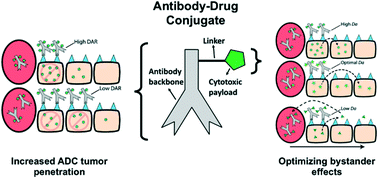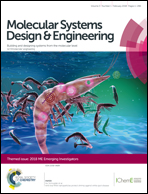Computational transport analysis of antibody-drug conjugate bystander effects and payload tumoral distribution: implications for therapy†
Abstract
Antibody drug conjugates (ADCs) have a proven clinical record with four FDA approved drugs and dozens more in clinical trials. However, a better understanding of the relationship between delivery and efficacy of ADCs is needed to improve the rate of successful clinical development. Recent evidence indicates that heterogeneous distribution can play a large role in the efficacy of these drugs. However, the impact of the drug payload, particularly the ability of the payload to diffuse outside of the original targeted cell into adjacent cells (the bystander effect), is not completely understood. Given the challenges in directly measuring the payload distribution within tumors, we developed a predictive computational model to study payload distribution as a function of antibody dose, payload dose, and payload properties. The computational results indicate that: 1) the heterogeneous tumoral distribution of ADCs impacts efficacy, and increasing the antibody dose improves penetration and efficacy. 2) The increased penetration of payloads with bystander effects can partially compensate for poor antibody penetration, but larger antibody doses still result in further improvement. This occurs because of the higher efficiency of direct cell killing than bystander killing. 3) Bystander effects are important for killing antigen negative cells, and an optimum in physicochemical properties exists. Payloads with a balance in cellular uptake versus tissue diffusion enter cells fast enough to avoid tumor washout but slow enough to reach distant cells. Therefore, optimizing the antibody dose, payload dose, and payload physicochemical properties results in ideal delivery to the site of action and maximum efficacy.

- This article is part of the themed collection: MSDE Emerging Investigators 2018


 Please wait while we load your content...
Please wait while we load your content...